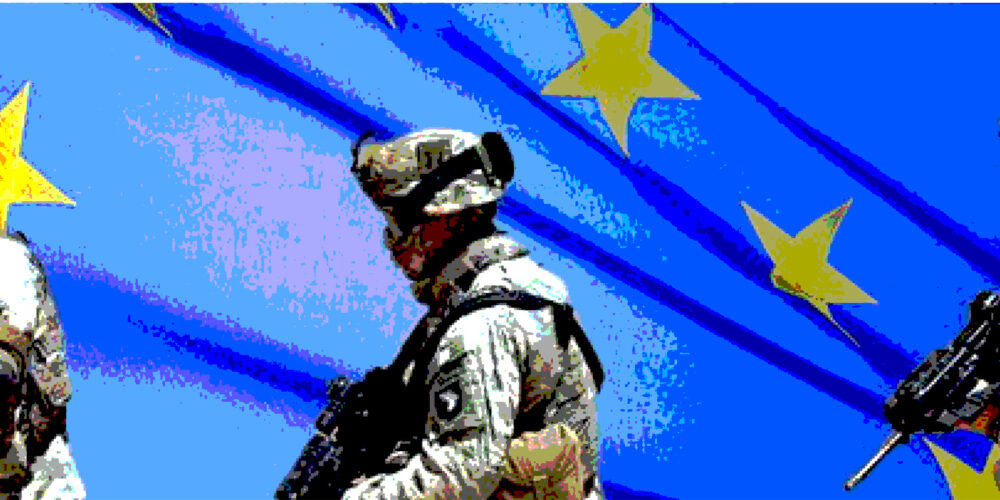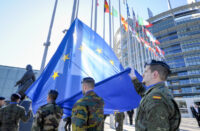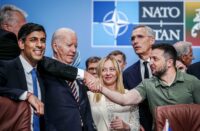Part 1
The Lisbon Treaty is working perfectly. Just as opponents of the EU in Ireland warned after the bloc’s leaders signed the treaty in December 2007, the last vestiges of the Irish state’s neutrality have disappeared over the last decade.
The importance of the Lisbon Treaty to the incontrovertible aims of the member-states’ ruling classes, especially the core imperialist states, was made clear after a plucky Irish electorate shocked its political leaders in 2008 by defeating it in a referendum, in the only member-state where the treaty was put before the people. The government of the time was simply told to have a rerun of the referendum and obtain the “correct” result. Deeply cynical lies were repeated endlessly during the second referendum campaign, claiming that the Irish state’s military neutrality would not be jeopardised by its ratification.
It is worth reviewing exactly what institutions were set up under the Lisbon Treaty before considering what has become of them in the intervening thirteen years.
The treaty centralised the institutions that implement the EU’s “common security and defence policy,” and reduced scrutiny over them, in the interests of “efficiency,” bringing “co-operation on defence among the participating EU Member States to a new level.”[1] One single member of the unelected European Commission, the newly created “high representative for foreign affairs and security policy,” would oversee all the EU’s activities in the area of foreign policy.
Readers of Socialist Voice will be familiar with the “permanent structured cooperation” (PESCO) initiative. Its secretariat comprises two agencies: the European External Action Service and the European Defence Agency.[2] The EEAS is the EU’s diplomatic corps. It sends delegations to international organisations, and its divisions monitor each region of the globe. The EDA is specifically tasked with developing the EU’s military-industrial complex, by creating an internal market for arms procurement and conducting research on the resources needed for military operations.[3] Both these agencies report directly to the “high representative.”
Since the adoption of the Lisbon Treaty, the militarisation of the EU has hastened as its partnership with the United States has come under enormous strain. The ruling classes of the EU’s member-states can no longer depend on the United States. The mistrust worsened considerably during the period of the Trump government; but a change of occupant in the White House will not reverse the goal of “strategic autonomy” envisaged by the EU.[4]
The core EU states are no longer content to be at the mercy of US whims in NATO. In its annual report for 2019, the EEAS bemoaned US sanctions against Russia and Iran, claiming that they interfered with the “legitimate business” of European companies. Consequently, the EU is seeking to protect its “economic sovereignty” by creating “independent economic channels” to circumvent American-imposed sanctions.[5]
Furthermore, the split down the Atlantic between these ruling classes has resulted in the creation of the European Defence Fund. Set up in June 2017, it finances the research and development of military equipment and technology. The multi-annual financial framework for 2014–2020 allocated €590 million to military co-operation.[6] After a proposal from the Commission to pledge €13 billion to the EDF, it was finally allocated €8 billion under the MFF for 2021–27, its budget being reduced in the light of the pandemic.[7]
In 2019, proponents of the EDF argued that the lack of co-operation between EU member-states in matters of “defence” was costing between €25 billion and €100 billion every year.[8] The objective of allowing European military contractors to submit a tender to any member-state government means that the largest corporations can establish a monopoly over this lucrative market, with the core member-states pushing for their national champions to become EU-backed industrial behemoths.
Not surprisingly, the US armed forces are the standard by which the EU judges its operations and military capacity, implying that the bloc has plenty of catching up to do.[9]
The centralisation of the member-states’ military capabilities is overseen by the EU’s permanent military apparatus. At its head is the EU Military Committee, consisting of the chiefs of staff of the member-states. The crucial unit that plans operations, assesses external threats and analyses intelligence is the EU Military Staff. Both the EUMC and the EUMS report directly to the high representative and the bloc’s foreign ministers.
Although the EUMS was formed in 2004, its role has expanded significantly since 2017 with the establishment of the Military Planning and Conduct Capability unit. This now directs EU missions in Mali, Somalia, and the Central African Republic.[10] In the Sahel region of Africa in particular these missions complement those of the French army, the largest military force within the EU. Hervé Bléjean, a vice-admiral of the French navy, is director-general of the EU military staff.[11] France, with its deep commercial and diplomatic links to Africa, given its colonial past, is enlisting troops from other EU member-states to advance the interests of French capital in the region.
Large-scale operations are being planned by the EU for the years ahead. In November 2018 the EU Council decided that the Military Planning and Conduct Capability unit should be “ready to plan and conduct one executive military operation of the size of an EU Battlegroup [2,500].”[12] Warnings of a future EU army from the No side during the Lisbon Treaty campaigns were not exaggerations in the slightest. When it comes to warfare at sea, the present high representative, Josep Borrell of Spain, has stated that a central goal of the EU is to be “a global maritime security provider.”[13]
The vital sea routes along the African coast are at the core of this ambition. At present two naval operations are being co-ordinated under the EU flag in the region. One is enforcing the UN arms embargo on Libya, the other combating piracy off the Somali coast. The most far-ranging project for EU fleets, however, is the “coordinated maritime presence” concept, which was launched in the Gulf of Guinea in January 2021.[14] This will add to the military assets of France, Italy, and Spain, which already have a large footprint in the Gulf.
The explicit aim of this concept is to ensure “a permanent maritime presence and outreach in Maritime Areas of Interest.”[15] EU imperialism is not hiding its intentions: it wants to secure supply lines of commodities and energy resources for European big business and to promote “investor confidence.”[16]
A tenth of EU member-states’ oil consumption is obtained from the Gulf of Guinea, and there are an average of thirty EU-flagged or EU-owned vessels in the Gulf at any one time.[17]
Africa has a “comparative advantage” over the Middle East in its proximity to Europe, the latter being Africa’s primary export market for such valuable minerals as iron ore, diamonds, manganese, cobalt, and bauxite. It is the classic strategy of ensuring that resources can be extracted cheaply from the global south only to be shipped to the industrial centres of the imperialist core.
■ Part 2 of this article, in next month’s issue, will delve more deeply into the EU’s operations outside its borders in pursuit of its goal of “strategic autonomy,” analyse the military-industrial complex the EU is creating, and determine the Irish state’s role in the development of the EU’s military strategy.
References
- European Union, “About PESCO” (https://pesco.europa.eu/).
- European Union, “PESCO Secretariat” (https://pesco.europa.eu/pesco-secretariat/).
- European Union External Action Service, “Common Security and Defence Policy (CSDP) Structure, Instruments, Agencies” (2016).
- European Defence Fund: Factsheet (https://ec.europa.eu/docsroom/documents/34509), p. 1.
- European Union External Action Service, “EEAS Annual Activity Report, 2019” (https://tinyurl.com/u94yez27).
- European Defence Agency, “European Defence Fund: Factsheet,” p. 3 (https://ec.europa.eu/docsroom/documents/34509).
- European Defence Agency, “European Defence Fund (EDF)” (https://eda.europa.eu/what-we-do/EU-defence-initiatives/european-defence-fund-(edf)).
- European Defence Fund: Factsheet (https://ec.europa.eu/docsroom/documents/34509), p. 2 .
- European Defence Fund: Factsheet (https://ec.europa.eu/docsroom/documents/34509), p. 2 .
- “The Military Planning and Conduct Capability—MPCC” (https://eeas.europa.eu/sites/eeas/files/mpcc_factsheet.pdf), p. 2.
- “Vice-Admiral Hervé Bléjean” (https://tinyurl.com/syjknt4b).
- European Union External Action Service, “Common Security and Defence Policy (CSDP) structure, instruments, agencies” (2016).
- European Union External Action Service, “Why the EU needs to be a global maritime security provider” (2021) (https://tinyurl.com/3bb26pff).
- European Union External Action Service, “The EU launches its Coordinated Maritime Presences concept in the Gulf of Guinea” (2021) (https://tinyurl.com/k4hscmyf).
- European Union, “Coordinated Maritime Presences” (2021) (https://tinyurl.com/tdc6wsr5).
- Council of the European Union, “EU Strategy on the Gulf of Guinea” (2014) (https://tinyurl.com/wmrecr6k), p. 12.
- Council of the European Union, “EU Strategy on the Gulf of Guinea” (2014) (https://tinyurl.com/wmrecr6k), p. 2.






